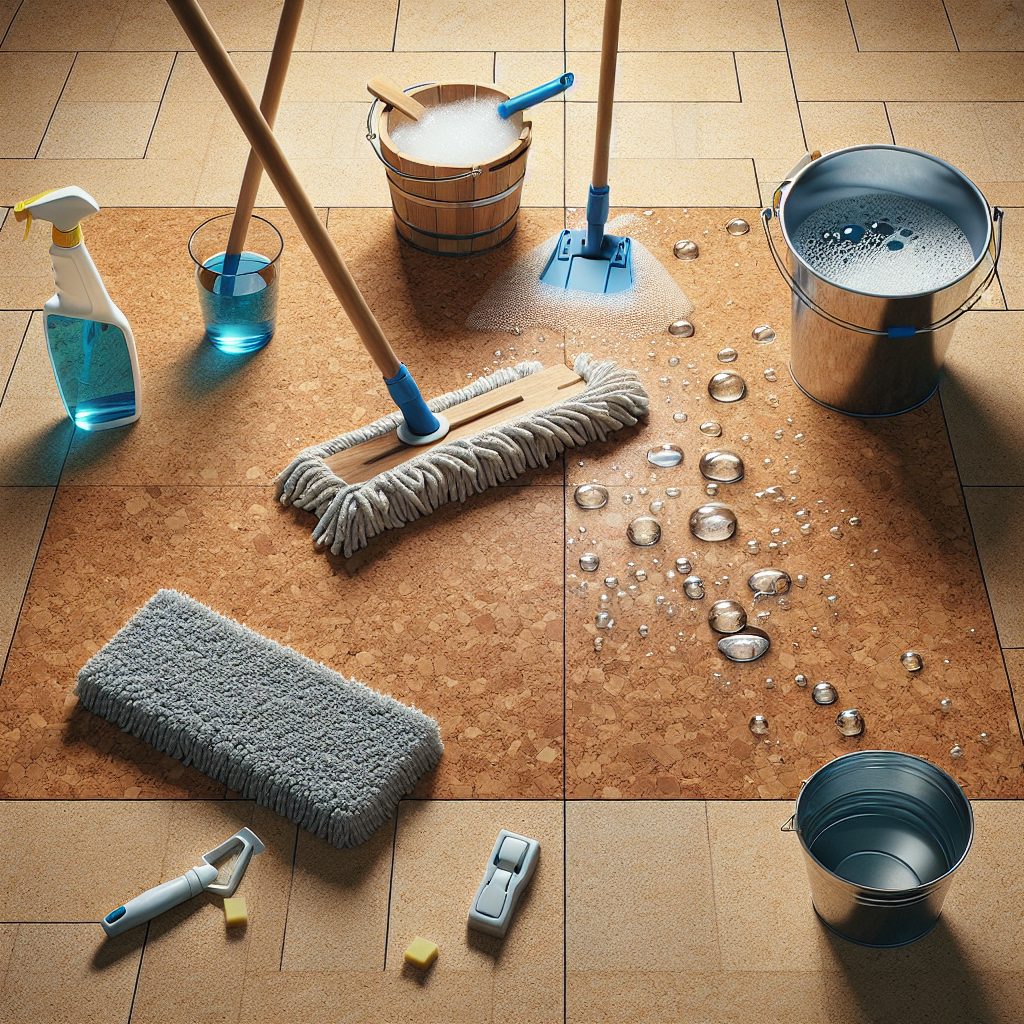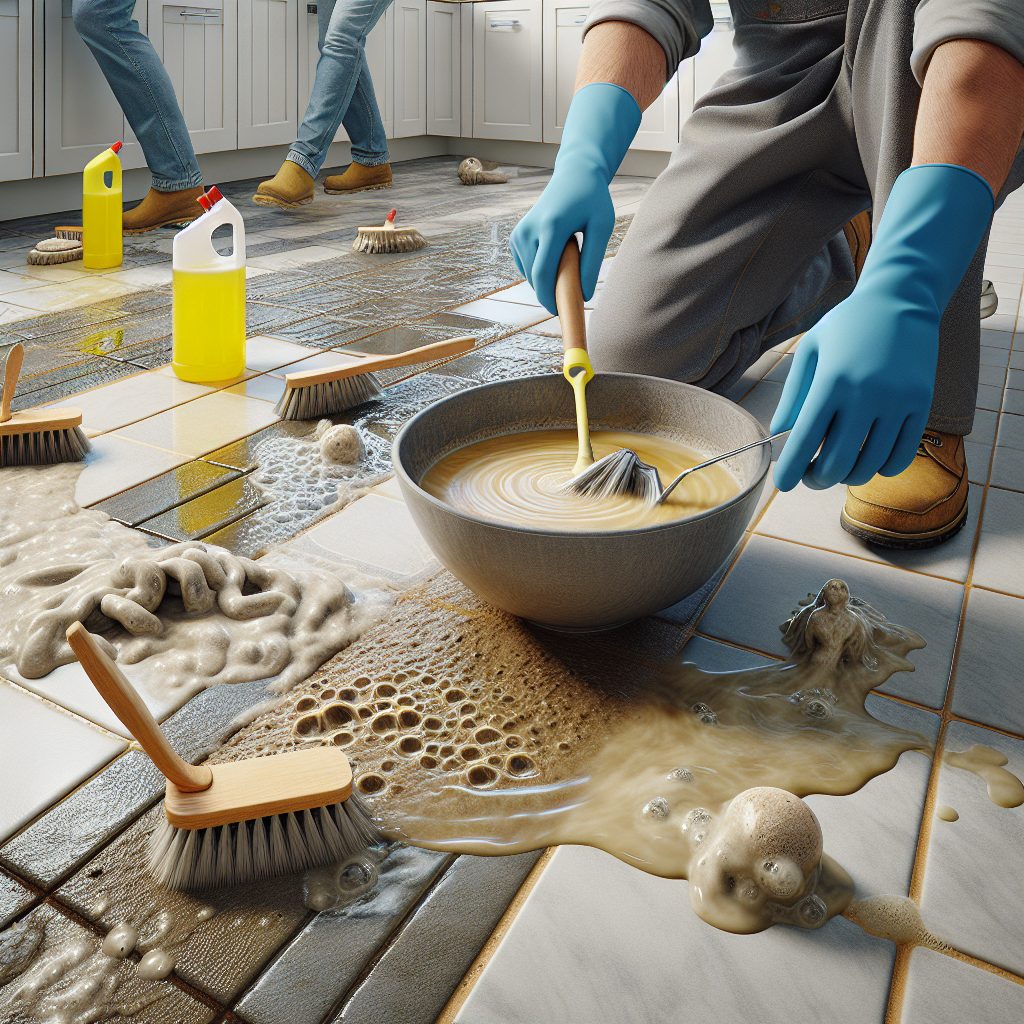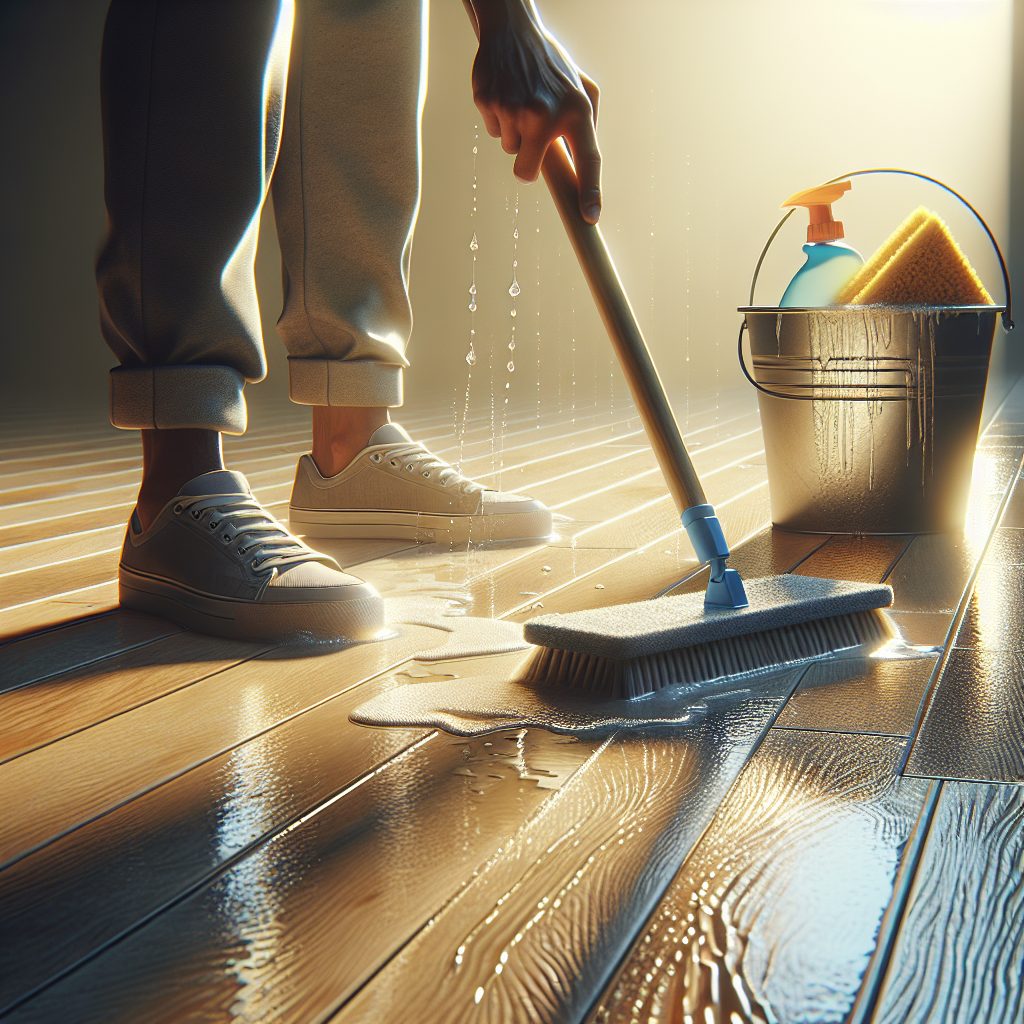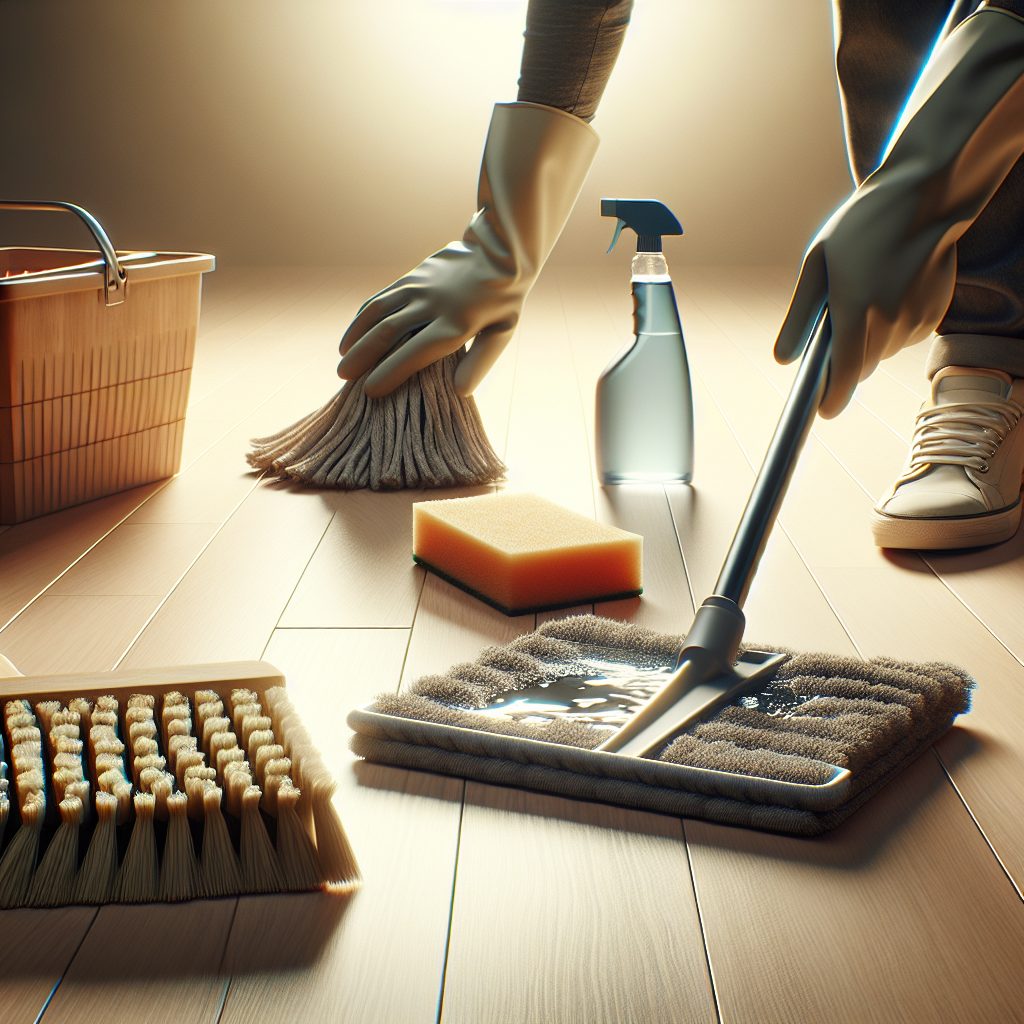
Cork flooring, heralded for its natural resilience and environmental friendliness, offers a unique blend of comfort and sustainability to any interior space. Extracted from the cork oak tree bark, primarily found in the Mediterranean region, this material is lauded for its ability to bounce back from compressions and naturally repel allergens, making it an ideal choice for both residential and commercial settings. The cellular structure of cork, riddled with air-filled pockets, not only provides thermal and acoustic insulation but also demands a distinctive approach to maintenance to ensure its longevity. As homeowners and facilities managers strive for eco-friendly options that don’t sacrifice style, cork has surged in popularity, bringing along the need to understand the nuanced care it requires to retain its natural beauty and functionality over time.
Navigating the do’s and don’ts of cork floor maintenance can sometimes be as nuanced as the material itself. Unlike traditional hard flooring, cork floors necessitate a gentle touch and specific cleaning methods to avoid damage. The upcoming section of this article will delve into the crucial steps and key takeaways to effectively clean your cork floors without diminishing their integrity. We’ll explore the most appropriate cleaning solutions and techniques, highlight how to deal with spills and stains, and underscore the importance of regular maintenance to extend the life of your cork flooring. Stay tuned to uncover how to best showcase the enduring and sustainable elegance of cork underfoot, ensuring that it continues to complement your living or work space for years to come.
Key Takeaways
1. Cork floors should be swept or vacuumed regularly to remove dirt and grit that can cause scratches. Using a soft-bristle attachment is recommended to prevent damaging the surface. Apart from daily cleaning, a damp mop can be used for a deeper clean, provided that it’s wrung out properly to avoid excessive water, which can damage the cork.
2. When mopping cork floors, it is crucial to use a mild detergent or a homemade solution consisting of vinegar and water. Harsh chemicals and abrasive cleaners should be avoided as they can strip the finish off the cork and potentially harm the material. The ideal cleaning solution should be pH-balanced to maintain the cork’s integrity.
3. Spills should be wiped up immediately because cork is porous and can absorb liquids, which might lead to staining or warping. For stubborn stains, a mild cleaning solution can be applied, but scrubbing should be gentle to avoid wearing down the finish or the cork itself.
4. Maintenance of cork floors involves periodic resealing to protect them from wear and tear. Water-based polyurethane is a common sealant, but it’s important to follow the manufacturer’s recommendations for specific products suited to cork. This sealing process should be done as per the suggested frequency to maintain the floor’s durability and appearance.
5. Protect cork floors from furniture marks and indentations by using protective pads under furniture legs. Additionally, it’s recommended to avoid high heels and sharp objects on cork flooring, as they can cause dents and punctures.
What Is the Best Way to Maintain and Clean Cork Flooring?
Understanding Cork Flooring Properties
Cork, as a natural material, boasts unique characteristics that make it both comfortable and durable. Its cellular structure provides a cushioned feel underfoot and also makes it a natural insulator. Additionally, cork is inherently antimicrobial and hypoallergenic. To preserve these properties and maintain the appearance of cork floors, regular and proper cleaning methods must be implemented.
Regular Cleaning Regimen
Dirt and grit can act like sandpaper on cork flooring, causing scratches and wear over time. It is vital to sweep, dust, or vacuum regularly to minimize this abrasive action. When vacuuming, use a soft brush attachment to avoid scratching the surface. A microfiber dust mop is also effective for picking up dirt without causing damage.
Spot Cleaning Techniques
Spills should be wiped up promptly to avoid staining. For spot cleaning, use a damp cloth or sponge with a mixture of water and mild detergent. Care should be taken not to oversaturate the cork, as excessive water can cause damage. For stubborn spots, a small amount of diluted white vinegar can be an effective eco-friendly alternative.
Deep Cleaning Cork Floors
Occasionally, cork floors will require deep cleaning. A solution of water and gentle wood cleaner can be used, but ensure the mop is well wrung out to avoid soaking the floor. Alternatively, specialized cork floor cleaners are available which are designed to clean effectively without causing harm to the flooring.
Dealing with Tough Stains and Scratches
For tough stains like ink, oil, or wine, applying a paste of baking soda and water directly to the stain before cleaning can be helpful. Light scratches can often be buffed out using a fine-grade sandpaper, but it’s important to reapply a sealant afterwards to protect the exposed cork.
Maintaining the Finish
Most cork floors come sealed, which protects the surface from damage and moisture. It’s critical to maintain this finish to keep the floors in optimal condition. When the finish starts to show wear, reapply a fresh coat of sealant following the manufacturer’s instructions. This will typically need to be done every few years.
Protecting Cork Flooring
In addition to cleaning, cork floors should be protected from furniture dents and direct sunlight. Use felt pads under furniture legs, and employ blinds or curtains to shield the floor from UV rays, which can fade and deteriorate the cork over time.
Safety Measures for Cork Floor Cleaning
Always avoid harsh chemicals and abrasive cleaners, as they can damage cork flooring. Be sure not to use steam cleaners or wet mops that may saturate the cork. Finally, it is advisable to follow any care recommendations provided by the cork flooring manufacturer.
Are There Specific Tips for Preserving Cork Flooring Longevity?
- Implement a “no shoes” policy to reduce dirt and minimize surface scratching.
- Place mats at entryways to catch moisture and debris from outdoors.
- Keep pet nails trimmed to prevent scratches on the cork surface.
- Rearrange furniture occasionally to distribute wear evenly across the floor.
- Immediately wipe up any spills to prevent liquid penetration and stains.
- Use area rugs in high-traffic zones to limit direct wear on the cork floor itself.
- Perform a yearly inspection of the surface sealant to address any necessary touch-ups.
What is the best way to clean cork floors on a daily basis?
The best way to clean cork floors daily is to sweep or vacuum them to remove dirt, dust, and debris. Avoid using harsh brushes or vacuums with beater bars as they can damage the cork’s surface.
Can I use a steam mop on cork flooring?
It is not recommended to use a steam mop on cork flooring as the high temperature and moisture can cause warping or delamination. Instead, opt for a damp mop with a mild cleaning solution.
Are there specific cleaning products I should use for cork floors?
Yes, you should use pH-balanced, non-toxic, and cork-friendly cleaning products. Avoid ammonia-based, abrasive, or harsh chemicals that can strip the finish and damage the cork.
How often should I clean my cork floors?
Cork floors should be swept or vacuumed daily to remove surface debris, and mopped with a damp mop as needed. Periodic deeper cleaning should be conducted every few weeks, depending on the traffic and use.
Is it necessary to seal cork floors, and how does it affect cleaning?
Sealing cork floors provides an extra layer of protection against spills and stains, making them easier to clean and maintain. It is necessary to reseal cork floors every few years, depending on the level of traffic and wear.
Can water damage cork floors, and how can I avoid this during cleaning?
Water can damage cork floors if it’s allowed to soak in, causing warping or swelling. When cleaning, use a damp mop rather than a wet one, and promptly wipe up any spills to prevent water damage.
How do I remove stains from cork floors without damaging them?
For stains, use a soft cloth and a mild cleaning solution suitable for cork floors. Gently blot the stain rather than scrubbing aggressively to avoid damaging the floor’s surface.
Is it safe to use a wax finish on cork floors for added shine?
While a wax finish can add shine to cork floors, it also requires more maintenance. It’s important to use a wax product specifically designed for cork floors and to follow the manufacturer’s application guidelines.
How can I protect my cork floors from furniture scratches and scuff marks?
To protect your cork floors from scratches and scuffs, use felt pads under furniture legs, place rugs in high-traffic areas, and avoid dragging furniture or sharp objects across the floor.
What should I do in case of a major spill or cork floor flooding?
In the case of a major spill or flooding, promptly remove the excess water with a dry, soft cloth or mop and allow the area to air dry. If the flooring has been severely damaged, consult a professional for advice or repairs.
Final Thoughts on Cork Floor Care
Properly caring for your cork floors not only maintains their beauty and longevity, but it also ensures a healthy environment in your home. Daily sweeping, prompt spill cleanups, and the use of appropriate cleaning products are key to keeping your floors in top condition. Regular maintenance, including resealing and protecting the floors from heavy furniture, will help your cork flooring remain durable and attractive for years to come. Remember, investing time in routine care pays off by preserving the natural appeal and functionality of your cork floors.
Cork flooring offers warmth and a unique texture that can enrich the aesthetic of any room. By following the straightforward cleaning and maintenance guidelines we’ve discussed, you’ll safeguard your flooring investment and enjoy the many benefits cork floors have to offer. A sustainable choice, cork flooring continues to grow in popularity, not just for its environmentally friendly properties but also for its ease of care, proving it can be both stylish and practical for modern living spaces.



